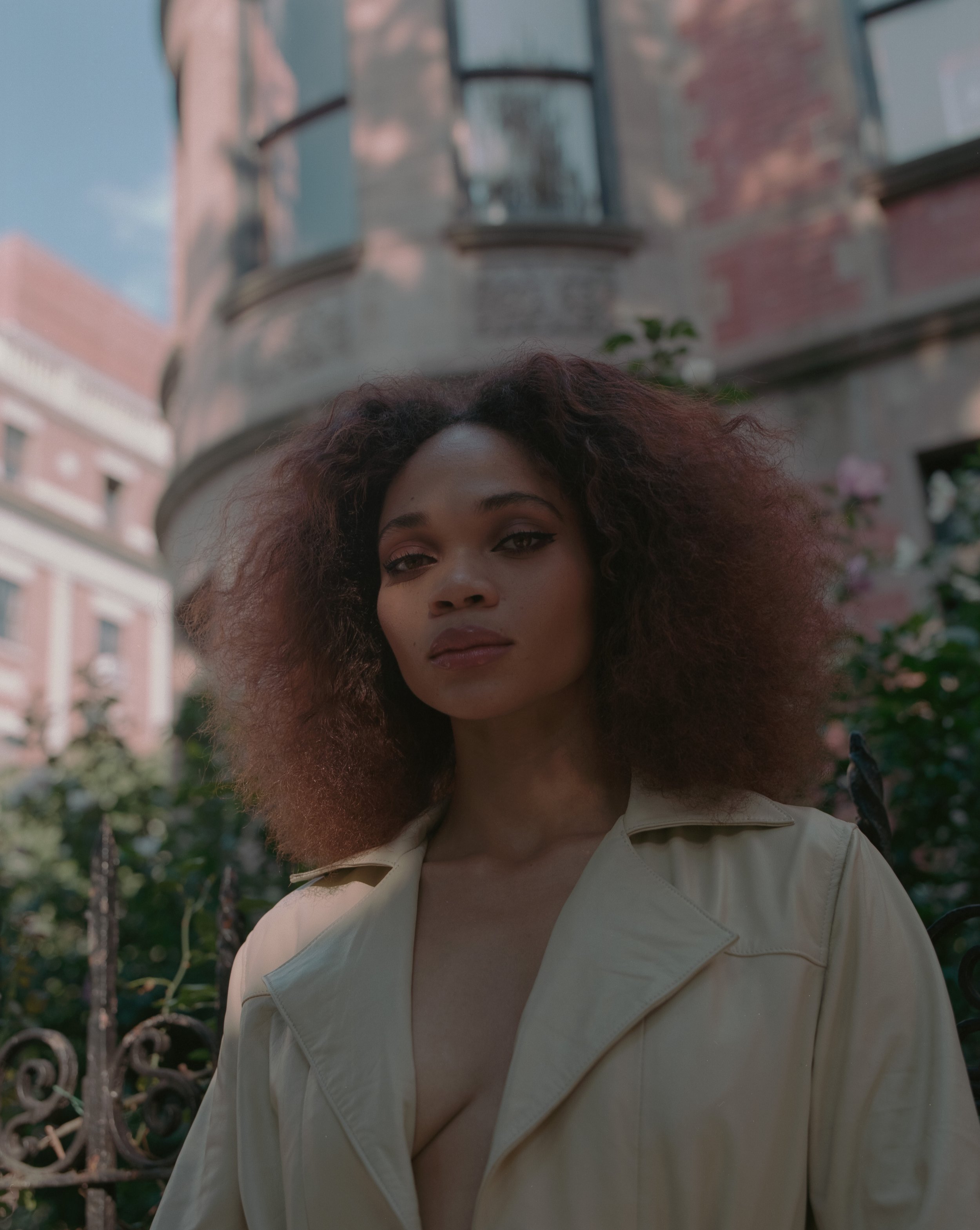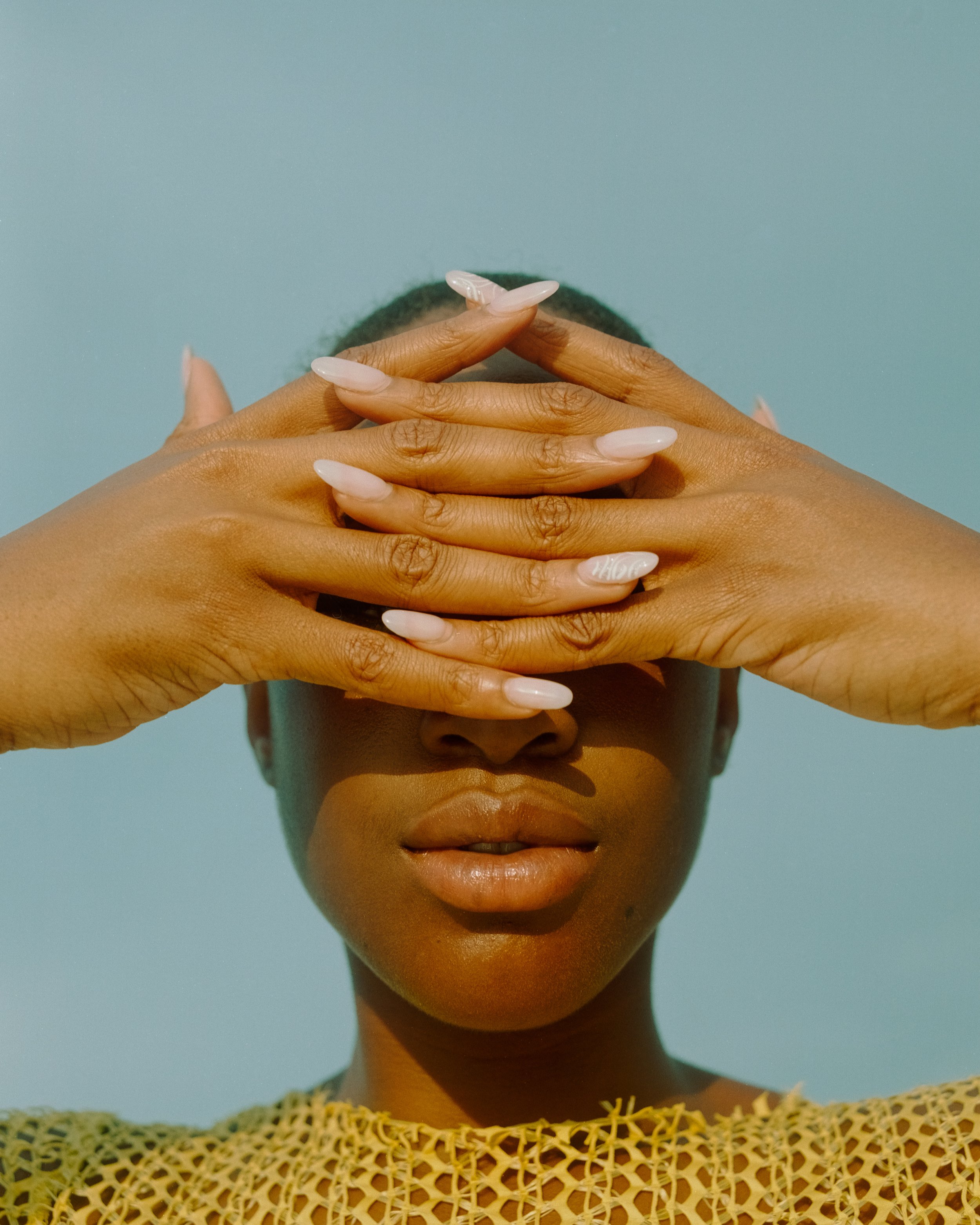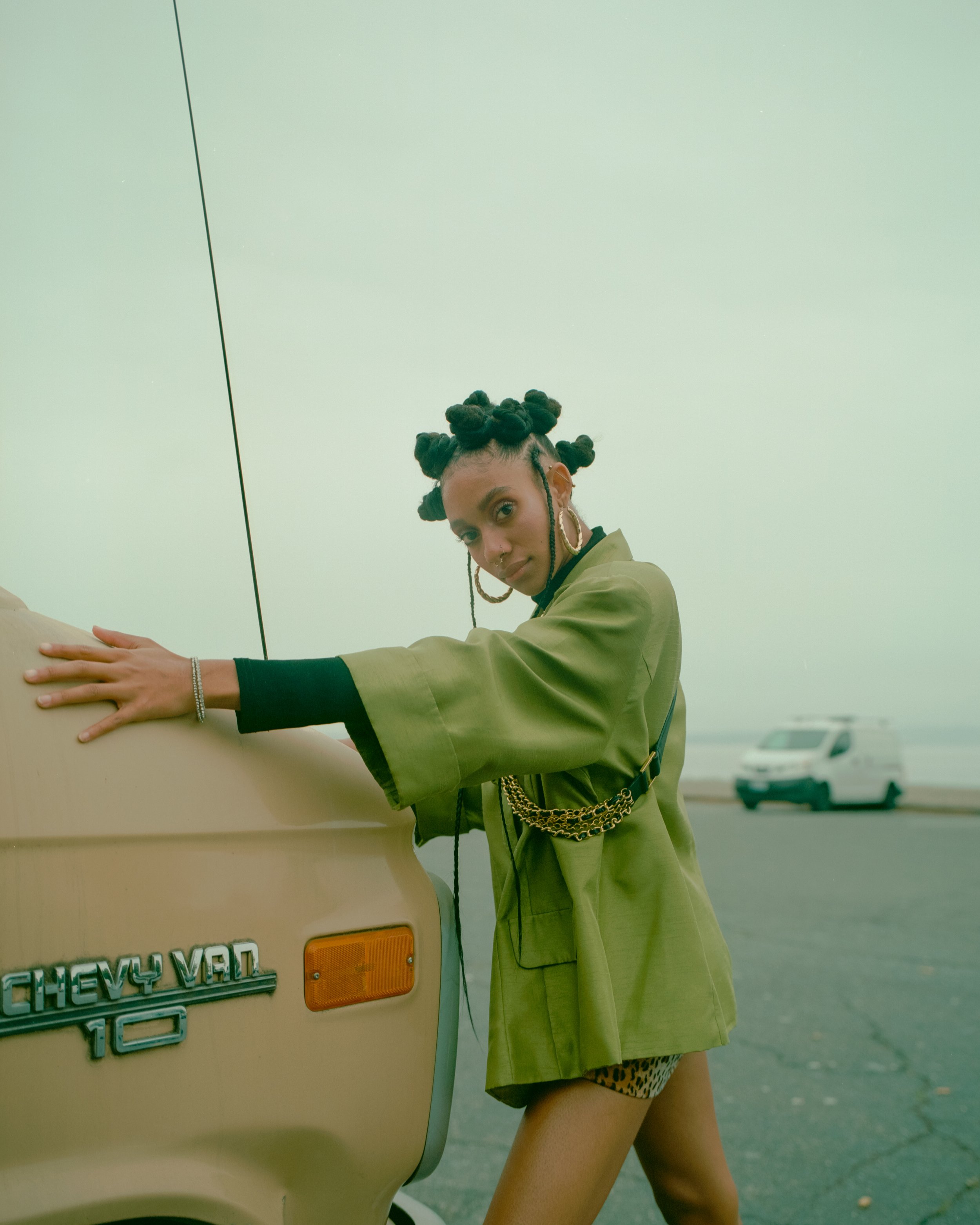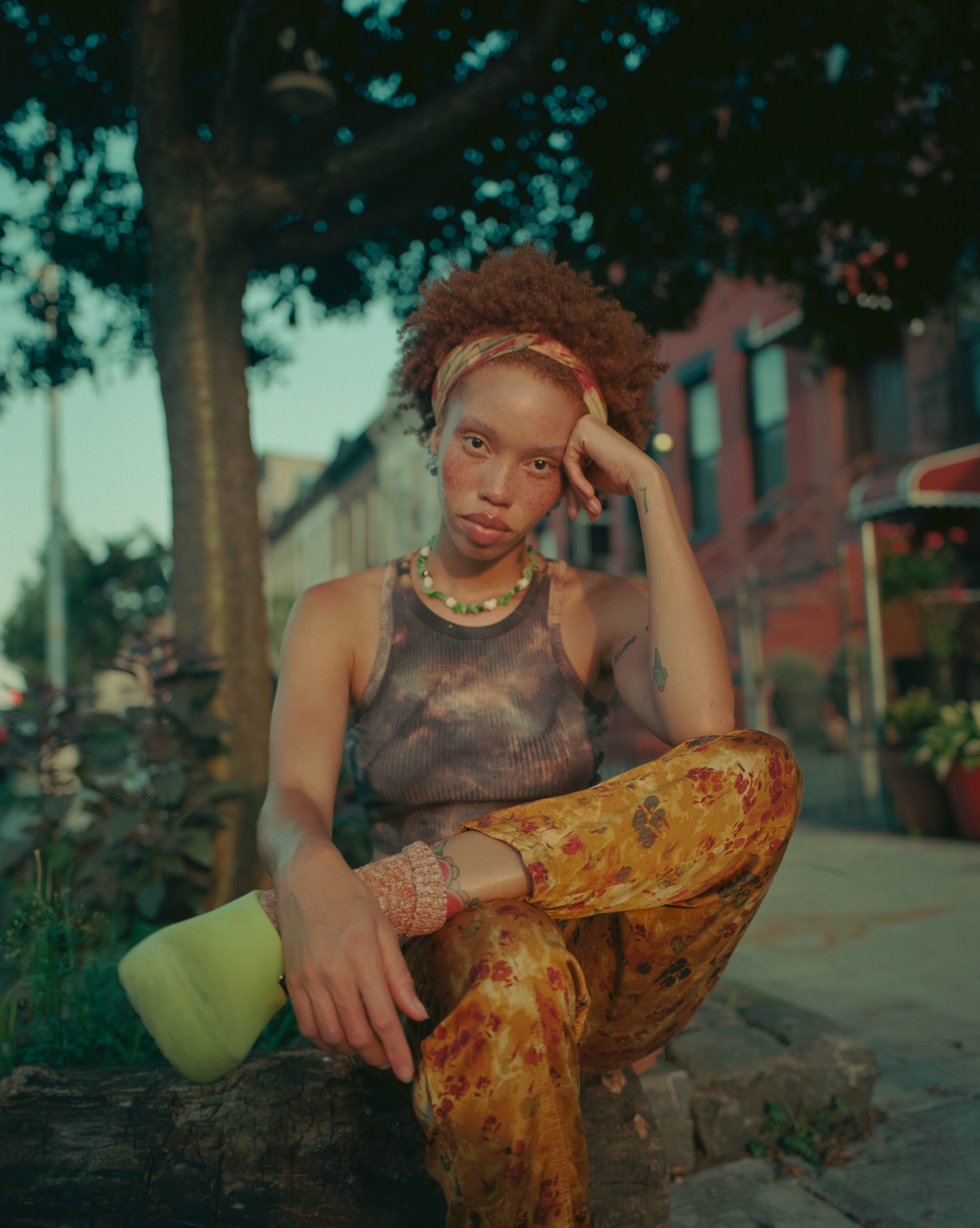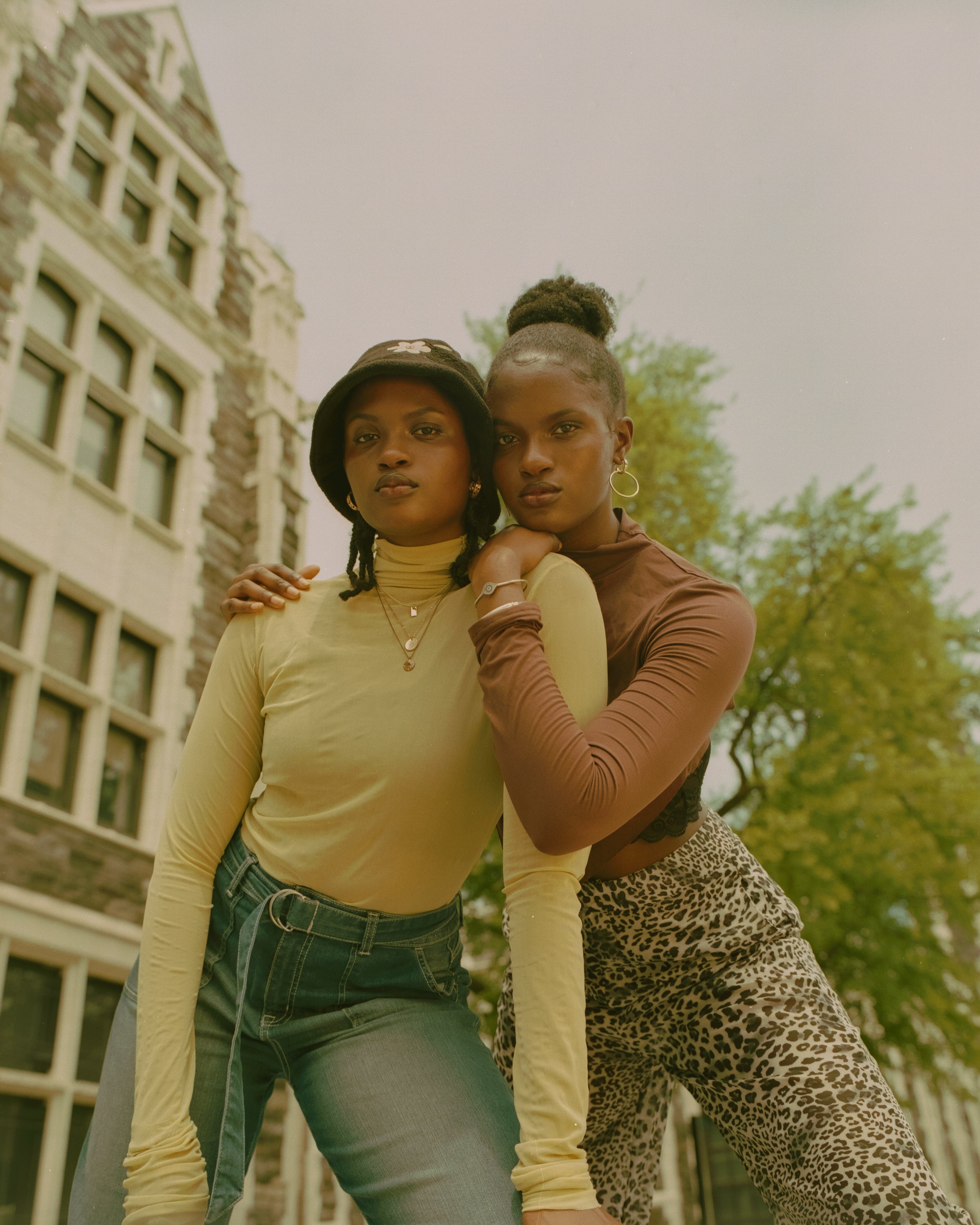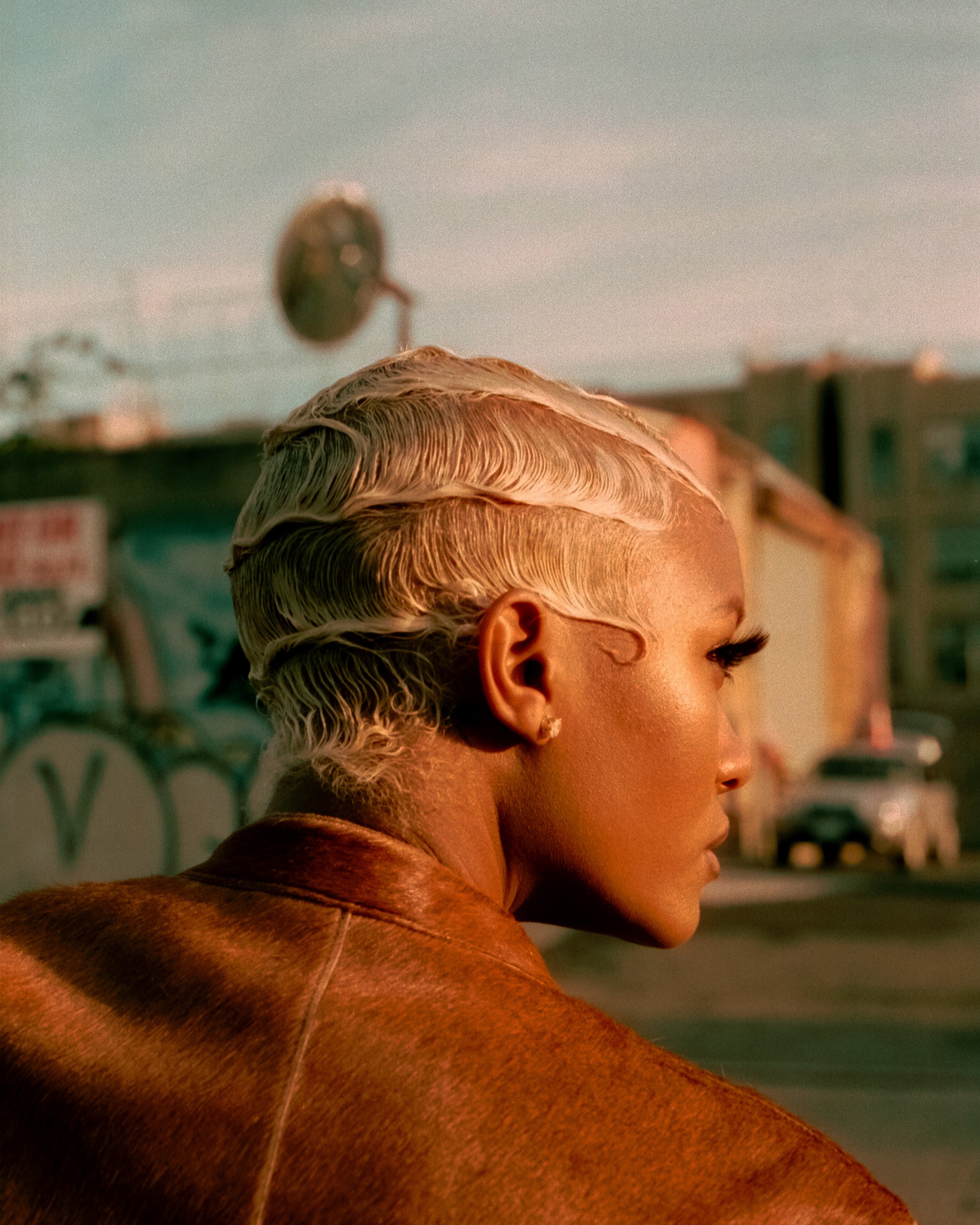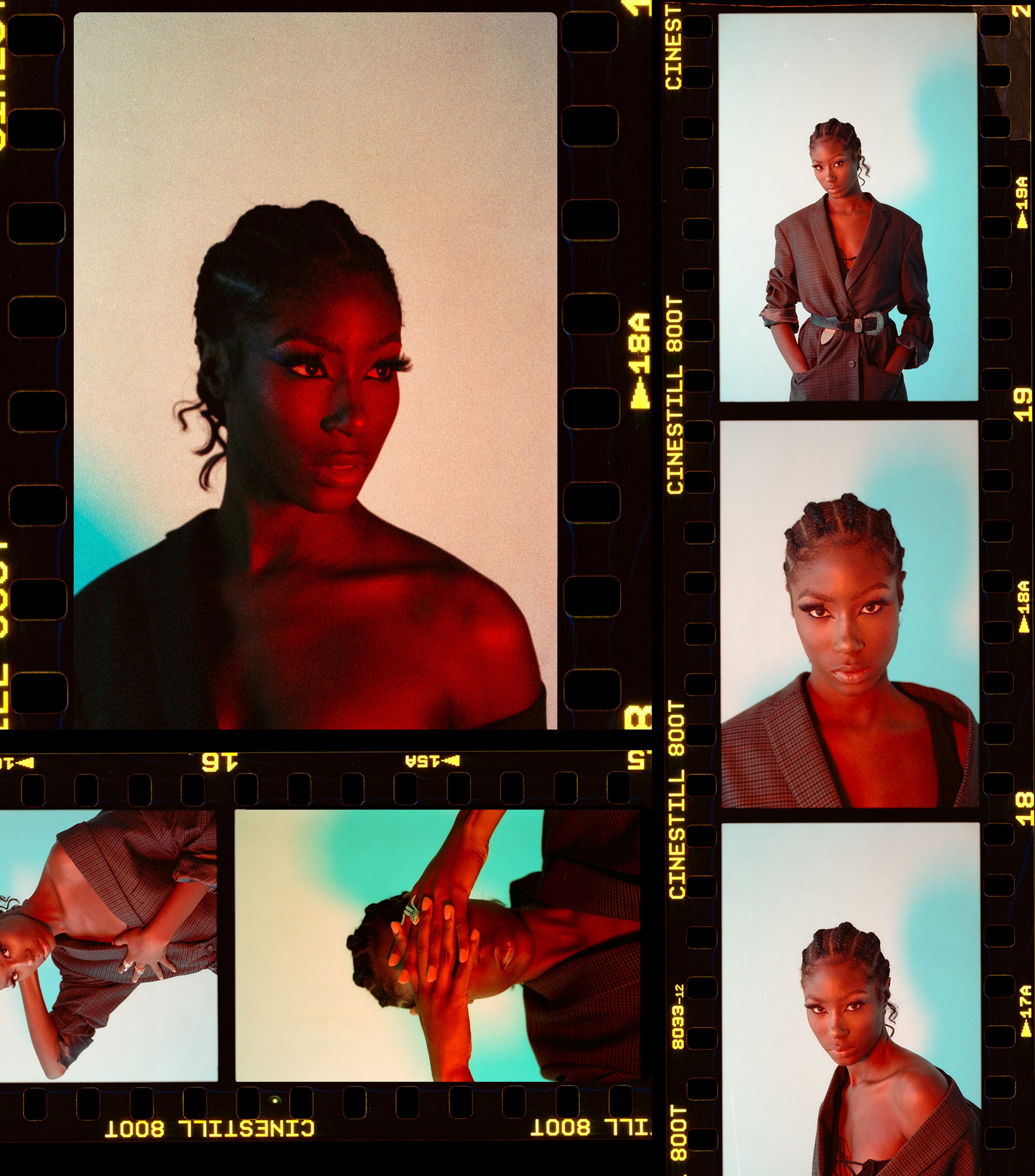From NY To LA: Sasha Stavila
Sasha Stavila is a Seattle, Washington photographer who has roots in New York City.
Stavila is a bicoastal creative who understands the importance of diversifying your portfolio and maintaining your creative options. As a photographer, creative director, and producer Stavila takes the challenge head-on being an all-around creative.
Currently working and living in Seattle, Stavila took the time to talk with us about managing creative pursuits, NFTs, film photography, and the importance of finding your photographic voice.
Where photography meets IT, Sasha Stavila is at the center of it all creating beautiful fashion-inspired portraits, minting and selling his personal work, and incorporating his own personal touch through creative storyboarding.
He brings many talents to the table but this multifaceted creative at his core pushes the envelope in developing work.
Sasha Stavila
Who is Sasha Stavila the Photographer?
SS: My name is Sasha Stavila. I’m originally from Seattle, Washington. I lived in New York for three years. And a lot of my artistry was focused in that area, just building myself as a photographer, creative director, and producer.
JR: I’m glad that you mentioned that. I’ve noticed that your creative process doesn’t only consist of photography, can you talk about what it’s like to be a creative director, producer, and photographer?
SS: I love the role of directing a shoot from the beginning to end, whether it’s starting on a storyboard, creating something out of nothing, and trying to see if a concept can be executed. I love the visual process of going on Pinterest to find some inspiration.
Depending on who I pitch the shoot to, I’ll formalize it into a storyboard and just tell them that idea. So for example, I did the same thing when I was working with Byas & Leon.
I had the idea of doing a 60s or 70s, inspired shoot. I wanted to make sure that I presented the storyboard to them right. They were really impressed with it. Then from there, it was about planning the shoot and assembling the team. Making sure that the vision could become a reality.
Photographed by Sasha Stavila
““I Think, As a Photographer, YOu Should Definitely Wear Many Hats For Your Own Success””
Pushing and challenging yourself to greater heights, so to speak. I really love that role, being a creative director and a producer. I like the little details of just, you know, trying to manage everything at once.
JR: It definitely shows, when looking at that work. That shoot for Byas and Leon, the hair, your color story, everything was put together beautifully. I was very struck by those images. I’m curious, how did the casting for that come about, were you in charge of that as well?
SS: Yeah, so I was in charge of casting for sure. I already had a model in mind. I was talking to Bethany about possibly doing a shoot together, Bethany being the model. She was totally down for it. Then I just had to fill the other role.
I found Denae, who was really thrilled about the idea when I’d reached out to her about it. Bethany and Denae being on the shoot together were fantastic. I couldn’t have asked for better models, as well as just the team overall. I’m super grateful to Harvey, the Co-Owner of Byas & Leon for just helping facilitate it all. I couldn’t have done it without him and his team of experts.
Photographed by Sasha Stavila
Stavila speaks on the importance of community amongst creatives
JR: Your work heavily centers, Black people, more specifically Black women. Could you give more context to that choice as an artist? What is your connection to the Black community?
SS: Absolutely. Well, it’s easy for me to say that I think Black is beautiful. Especially Black women, too.
Photographed by Sasha Stavila
I Love the Artistry and the RESILIENCE That Black People Show. It Really Inspires My Own Work As Well.”
While living in Brooklyn I had the opportunity to be surrounded by so many Black creatives. Like for example, Photodom, I always hit them up when they first opened.
I started out as a customer but over time, I got to know all the people that worked there and I think it’s safe to say they really liked me and I loved them too. I always hung with them at their office.
Though I say all that to say, there’s a big sense of community, especially with Black artists. It’s something that I really resonate with strongly. Without Black artists, I would not be the artist, or particularly the photographer that I am currently.
I owe them so much for that. I’ve always found ways to give artists that I know opportunities to be on shoots. Or I’ll show them a casting call. If there’s anybody that wants to do a photoshoot and has a model in mind, then I always try to think of the best models that I know.
JR: That’s really important to me as well. Having a community of creators that you can always go back to or work with is important.
SS: Yeah, shout out Rodra, Cyan, and Dom.
JR: Shoutout Suede too. Also, I want to state that the way you photograph Black women, it’s so careful. You can tell that you really know these people and your proximity to them is apparent in the work.
SS: I do want to note that it’s so important when photographing Black people that you get everything right, in terms of the lighting. I know, some photographers out there, not personally, but whenever they are working with people with a dark complexion the lighting is off. Or the coloring in post-production is off. I always do my best to make sure that they are represented as accurately as possible, especially with skin.
JR: Yeah, that is incredibly important. That’s something that I feel everyone should make sure they’re doing or at least noticing. Especially when working with Black artists or Black models.
For bicoastal creatives… How to maintain
JR: Also, I was really interested in the fact that you work on the East Coast and West Coast. How do you maintain your presence in both places?
SS: Yes, so I’ve only just started doing that recently. I’m still thinking about it right now. Currently, I’m in Seattle, Washington until I can move to Los Angeles. I’m just trying to stack up and find a job that’s sustainable.
I think the way that I maintain my presence on the East Coast is through social media. I interact with Instagram a lot and still connect with all my friends and artists back home.
Photographed by Sasha Stavila
“I’m Very Thankful For That, That I STill Have That Connection.”
It’s not like I’ve been forgotten about and I try to, whenever I get the opportunity, fly out to New York as soon as I can. I did that a couple of weeks ago for three shoots. I really enjoyed my time there even if it was so short.
My goal long term is to establish a presence in the West Coast, particularly Los Angeles while also maintaining my East Coast presence. So that I can just go anywhere for opportunities or work with some amazing artists.
JR: That’s really amazing to see. I love that way, as artists, we find places to root ourselves, but then we find ways to branch out.
SS: I will say that’s why I love remote work so much. It has allowed people to have that flexibility. I’m personally trying to find remote work right now so that I can make that possible.
JR: Absolutely, I definitely feel the same especially after the pandemic. A lot of us have had to go digital.
SS: I think it was absolutely necessary for a lot of companies particularly in the enterprise. To realize that remote work is possible. That you should give your employees flexibility. A little bit about myself, I also have a background in information technology.
Photographed by Sasha Stavila
I graduated with a computer science degree. I’m actually trying to find work in that field again, a contract or maybe in program management. So that I can use that to fund my artistry and also my business as a creative director and photographer.
JR: That is incredibly smart. Being able to fund yourself is a smart way to make creative work possible. In that regard, what personal projects are you currently working on?
SS: I am trying to find models to work with while I’m in Seattle. No big projects in particular. I do want to play around with some lighting effects. You may have seen, my last photoset with Veronika Collins on Instagram. She has this red light shining on her face. I really want to play with more lighting like that, especially when using Cinestill film.
Photographed by Sasha Stavila
From one film enthusiast to another
JR: I noticed that you specialize in film photography, what aspects of film photography drew you in?
“I love Film”
SS: I think it offers a very unique look to your final images. It really shows because a lot of creatives that I know are diving into film now and using that as their main look and artistry. I think it’s amazing to see how much the film photography community has grown over the years.
Also, it kind of sucks, well, no, it doesn’t suck that communities growing. Though the prices of film, as well, as cameras are increasing, naturally. Kodak just recently announced that they’re going to increase their prices by 20% across the board.
What does that leave me with? Not just with myself, but a lot of other creatives that buy film in order to make art. It’s an unfortunate situation. I really hope that it encourages other film companies, or if there are any out there to create more films, not just Kodak. In order for film photographers like myself to have options because Kodak is expensive in general.
In terms of the processing, and also, if you don’t have a scanner, then you are paying the lab for scanning and that can really add up. So you know, there have to be other options.
JR: In terms of other companies creating film, I’ve seen some of those smaller businesses like BKIFI or Street Candy. They’re often super fun and creative film stocks. Adding overlays, and all sorts of effects for younger photographers to try out. Though it is hard to pay for scanning and processing, etc.
I’m also wondering because I know you said you go to Photodom when you’re here in NY. While you’re on the West Coast, what do you do about scanning and processing?
SS: Scanning, I actually have my own flatbed scanner. That way I eliminate the cost of paying the photo lab for scans. I actually have a camera shop that I go to in my neighborhood called Kenmore camera.
It’s a 10-minute walk from here. It’s super convenient. They do a really good job of processing the film for me. With that said, I actually really want to process my own film. When I was going to Photodom a bunch, I learned from my buddy Suede, how to process my own film by hand. Thanks to him, I have that knowledge now.
I’m able to use C-41 and I even delve a little bit in black and white too. I think color film is a lot easier in my opinion. So I just have to make that initial investment of buying all the chemicals and the tools to get that started.
JR: There is a mono bath that Cinestill makes. It’s an inexpensive option for processing B&W film. You could test it out, it’s just a one-step process to develop. It’s really fun and I use it when I can’t afford to go to the lab.
Photographed by Sasha Stavila
Sasha talks NFTs and minting your photos
JR: Since you mentioned your background in IT, how do you feel about showing your work offline and online? Once you complete a project are you thinking about the ways in which your work can exist offline? Or do you prefer an online presentation?
SS: For the most part, I do go to online presentations. I also think of ways in which I can benefit from that work if I were trying to show it in a physical space. I really like manifesting that one day I will find a gallery that will feature some of my best work.
If people want to buy those prints, I will have that option for them to buy them. I want that to happen someday. It’s something that I’ve been thinking about a lot. Also, I’ve actually been exploring NFTs.
I’ve been using Voice.com to mint some of my work on there for people to buy if they want. I sold two NFTs a couple of weeks ago. The dude that bought it is actually like a really renowned photographer, in Great Britain.
I think he’s the first black photographer to photograph a cover for British Vogue. Misan Harriman. I was really surprised when he bought those two pieces. I’m super grateful. It showed me the potential for NFTs for artists.
It’s a space that everybody should explore, especially if you’re a photographer. I learned when I was trying to sell prints from my website, that I was not really getting traffic, and prints art prints in general, are very hard to sell.
Photographed by Sasha Stavila
Especially depending on the photo, if it’s a portrait of a random person, it might not be so easy to sell. To the buyer, it’s “Maybe, well, what am I doing with this picture?” With NFTs that’s different because the focus is on digital ownership and having that forever. As well as the potential for the value to increase over time from that photo if, say, your profile as an artist really raises over the years.
I’ve been trying to explore that space for myself. I’m also exploring other ways that I can monetize my artistry. I have a couple of ideas floating in the air, I really want to print my own T-shirts someday with some of my work. I just have to figure out the logistics of that.
JR: Thinking about your work and other forms that it can exist in is really amazing. Also, the ways it can benefit you or benefit the buyer. Also, I feel like you just taught me something honestly, because I’ve heard about NFTs but haven’t really delved into it yet.
A few people were trying to teach me about that. They talked about it with me a little and I’m glad that you brought that up. A lot of artists are considering that as an option.
SS: Absolutely. I think my advice for that is, don’t think too much about what NFTs are. It’s important to understand it. I think getting in on the ground floor so to speak, and just trying it out for yourself is a very beneficial way of understanding what NFTs are.
“YOU CAN FOCUS ON THE ABSTRACT AND FEAR ABOUT IT, BUT ONCE YOU ACTUALLY DO IT FOR YOURSELF, THEN YOU UNDERSTAND.”
Photographed by Sasha Stavila
Sasha Stavila dishes more advice
JR: Thank you. That is great advice. Is there anything else that you would like to share about your photography? Or your creative directing? Maybe even your process when thinking about conceptualizing personal projects?
SS: In terms of the process, I find a lot of inspiration just on Instagram alone. What other artists are doing and how they push the envelope. I always try to figure out a way that I can capture something similar to that. While also making it my own, I don’t want to just blatantly copy what another photographer has done.
“though i think, as an artist, we have a certain responsibility to pay homage to the other artists that inspire us.”
Stealing another artist’s identity is something that’s not cool in my book. So I always try to find a way to innovate my own work. Trying to make it my own. While it’s still unique in my eyes.
JR: We see so much imagery all the time, that it’s kind of even sometimes hard to not just be inspired by other artists. Right? Recognizing that fact is important when referencing work.
SS: Absolutely. I should clarify, it’s not to say that trying to mimic a photographic style is wrong, especially if you’re a beginner photographer. When you’re starting out, please try to copy as much as possible. I think it’s important for a beginner photographer to understand what their strengths are.
Getting a reference from other artists is a great starting point. You’re just beginning. It’s what I did, starting out as a beginner photographer. You know, if you’re a beginner out there, it’s okay to copy for a little bit from some of your favorite artists.
Over time, the hope is that it will eventually evolve into your own work. You’ll find a way to create that image in a unique light. That is you.
Photographed by Sasha Stavila
JR: How long have you been photographing?
SS: I’ve been photographing, since let’s see, 2017. And I started out like, anybody does, I took pictures of everything. I actually started on digital-first. I tried to explore that space, to see what drew me. Eventually, I found that I really loved photographing people. So I just photographed more and more of my friends.
When I moved to New York, I tried to explore the model space. I reached out to individuals that I thought would be willing to be photographed as a collaboration. Then eventually, I found my niche. Along the way, I got inspired to get into film photography, because of one of my best friends Alex. She had a Canon SLR. I really wanted to try that look for myself, to see what it was like.
Then I fell in love with film over time, and now I’m a portrait photographer, with a focus on fashion. As well as trying to explore other things. I really want to get into focusing on music artists. There are so many fire musicians.
“I’M MANIFESTING THAT ONE DAY I’LL DO A PORTRAIT SERIES WITH JAMES BLAKE BECAUSE HE’S ONE OF MY FAVORITE ARTISTS.”
JR: Yes, that would be so amazing. I can see that for you so I’m manifesting it with you.
SS: Thank you so much, I appreciate that.
JR: Also, I can see your fashion influence, and your portraits have a warmth to them. Even images from your portfolio with these pastel colors. You have an incredible eye. I really do appreciate you taking the time to talk with me I hope that we speak again in the future.
SS: Yeah, absolutely. I wish you the same. I just want to say thank you again, so much for the opportunity.
Sasha’s interview was done by Jade Rogers for Kulture Hub


